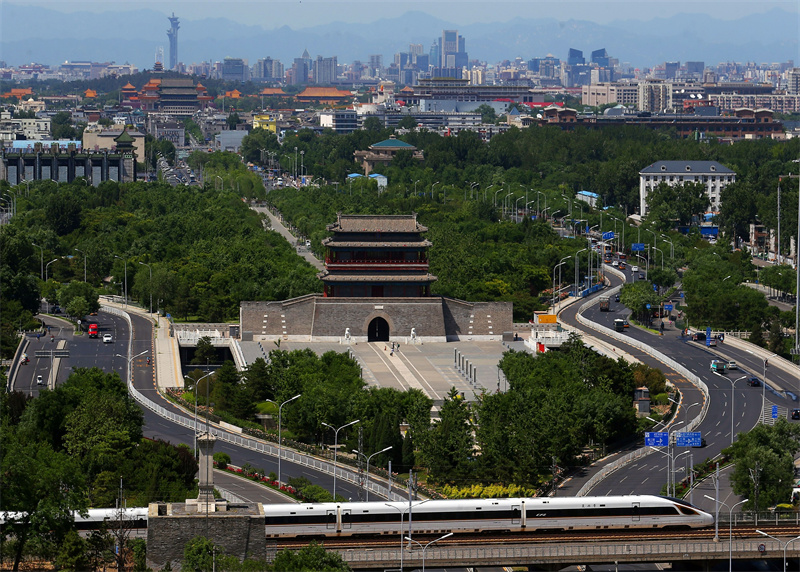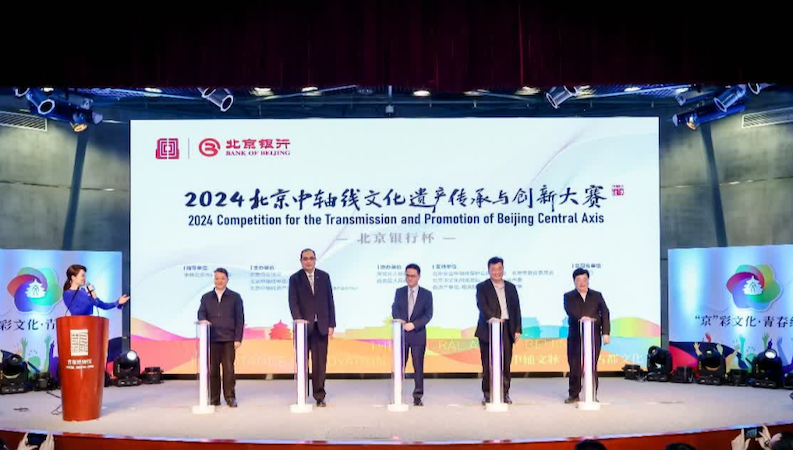Read the City – Exploring the Central Axis of Beijing
Exhibition Overview
Foreword
Beijing has an age-old and mysterious urban axis. Established in the Yuan Dynasty (1271-1368), it serves the function of a"book spine", connecting the north and south of the city and forming a unique Beijing city pattern of bilateral symmetry and solemnity. Mr. Liang Sicheng has defined the central axis as one "that dominates the overall pattern of an ancient major architectural complex in China". Ancient Chinese"founded a state at the center of the world, and built the imperial palace at the center of that state". Functioning as the ridge and spirit of the ancient capital, the Central Axis of Beijing represents the values of precision, moderation, orderliness and hierarchy, as well as the faith in humans as an integral part of nature. Moreover, it reflects traditional Chinese ideology on the construction of a national capital. As the existing longest urban central axis in the world, it contains the essence of ancient architecture of Beijing, carries on the memorable moments of the Chinese civilization, has witnessed quite a few little-known stories, and left us with some unresolved historical mysteries. Now, let's set off on a journey that transcends time and space to explore the mysteries of the Central Axis of Beijing.
Part I. Tracing · Ancient Legends
A view regarding the North Pole as the center was first developed in prehistoric primitive tribes, marking the initial stage of urban central axis. Although people in the past dynasties strove to form such an entity, it was not until the Yuan Dynasty that a pattern most approximating the one proposed in the Rites of Zhou: Book of Diverse Crafts was established. That pattern actually contains the rudiments of the Central Axis of Beijing. During the Ming and Qing dynasties (1368 to 1911), the Central Axis of Beijing was further developed and eventually completed.
Part II. Exploring · Bearing of a Great Power
From Yongdingmen to the Bell and Drum Towers via Zhengyangmen, Tian'anmen, Taihe Palace, Jingshan Mountain, the Central Axis of Beijing connects the outer, inner and imperial city with the imperial palace. The main buildings along the central axis are symmetrical and staggered in height, thus creating a unique and magnificent picture and an exciting architectural symphony. The Central Axis of Beijing, in addition to forming the ridge of the frame of Beijing city, serves as the best embodiment of the capital's boundless charm that makes it a famous historical and cultural city. Let's explore the past and feel the grandeur.
Part III. Narration · New Outlook
As time passed, various dynasties rose and fell in succession. After the monarchical system eventually perished, the Central Axis of Beijing, before an important carrier of imperial authority, saw great changes in its destiny and eventually found fresh justification in the new concept of urban construction. The feudal imperial facilities, such as the Forbidden City, Tian'anmen Square, and temples, gradually became places to serve the public. The change of function complies with the requirements of the new era and demonstrates historical progress. With its northward and southward extension and as its application for World Cultural Heritage listing approaches, the Central Axis of Beijing springs into life again, just like the city it dissects.
Conclusion
In the passage of time, the Central Axis of Beijing has always been the representative of vibrant Chinese civilization. It is the"Axis of China" that shows the bearing of a great power, the"Axis of the City" that opens up a great cultural space in Beijing, the"Axis of Emotions" that transmits great cultural customs, and also the"Axis of the Heart" that connects the ancient and modern people. Let's open our minds to think and explore its values and look into its future. With our wisdom and dreams devoted to it, it will surely recover its past splendor.
If you go:
December 21, 2019 - December 21, 2020. 9:00 - 17:00 (closed on Mondays)
Room O (Waterscape Garden, B1)




